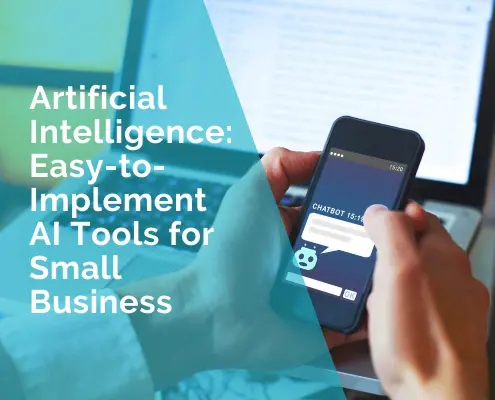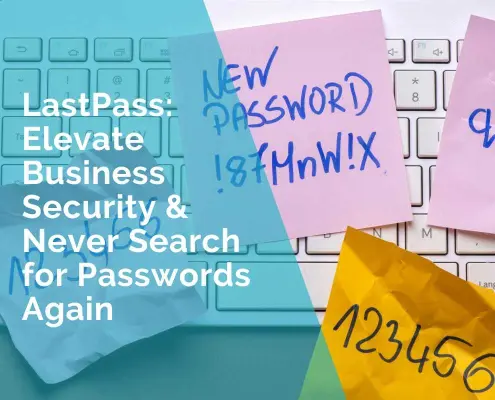Cybersecurity Risks for Remote Teams and How to Avoid Them
It’s been about two years since the COVID-19 outbreak began, and many elements of our work and personal lives have changed during that time. While many organizations send their staff home temporarily, others have realized the benefits of remote work, making it a permanent feature. Many firms have recognized the advantages of working from home, and all signs point to remote employment becoming the norm in the post-pandemic world.
These advantages include reduced travel time, lower office space costs, and improved work-life balance. However, a recent survey found that 43 percent of employees committed mistakes that had cybersecurity consequences for themselves or their firm while working from home. To secure their assets, remote enterprises must be more alert than ever and keep an eye out for cybersecurity dangers such as phishing schemes.
Understanding the Сyber Risks of Remote Working
Remote employment has given rise to a slew of cyber and fraud hazards, each of which presents substantial hurdles for both individuals and businesses. Phishing attacks, in which fraudsters impersonate trustworthy institutions to get sensitive information, have grown more common. Unsecured WiFi networks, which were formerly thought to be handy, can now be used to get unwanted access to personal and business information. Not to mention the disquieting possibility of equipment theft, which adds another layer of vulnerability to the equation. Unfortunately, these threats are not hypothetical; they happen every day!
The cyber threat landscape is anything but static. It’s an ever-changing environment in which fraudsters are always adapting their techniques to attack new weaknesses. Remote work settings, with their complex network of digital links, have become attractive targets. As we need technology to be productive, the necessity for strong cybersecurity safeguards is greater than ever.
Proactivity isn’t simply recommended; it’s necessary. Ignoring the impending cyber threats in a remote work environment might have serious implications. Data breaches, for example, can reveal personal information, result in catastrophic financial losses, and cause permanent reputational harm. So, how can you mitigate remote worker security risks?
Top 7 Сybersecurity Risks of Remote Work
Phishing Attacks
Phishing attacks remain a major danger to the cybersecurity of remote teams because unscrupulous people target isolated workers and make them disclose their identity or download malicious software. Cyber attacks may often take the form of emails that contain legitimized headers, messages that prompt the staff to click on links, or even reveal their identifications and passwords.
From here it is comprehensible that to avoid falling into the phishing traps the organizations should launch extensive awareness campaigns that can give the employees insights about the common aspects, features, and appearances of phishing and suspicious communication attempts. These kinds of learning should be backed up by regular simulations to enhance the grasp of the information being taught. Also, the out-of-the-box email filtering solutions can further predict possible ‘phishing’ emails and prevent them from entering the employees’ mailboxes. Increasing the utilization of MFA or two-factor strongly makes it even more challenging for an attacker to penetrate the systems even if the regular login details are obtained. Creating awareness of phishing techniques and using protective measures in technology help organizations minimize cases of phishing attacks within their decentralized teams.
Data Leakage
Information loss is one of the major threats to cyber security for remote working since vital information can be accidentally disclosed or invaded. For example, while proceeding with outbound sales dialing organizations must address cyber security risks to protect sensitive customer information and maintain compliance. If this information is not adequately secured, it can be exposed to unauthorized access or cyberattacks.
Data leakage is something that organizations need to avoid and for this reason, data access should be granted only to those who are allowed to access such information. Data encryption for both means an additional layer of security to ensure the data is well protected. It can take place in the form of training sessions where employees can be trained on correct methods of handling sensitive data, such as distinguishing between phishing scams and genuine requests, and other improper ways of sharing files and documents.
By using VPN connections the remote connections can be protected and DLP solutions can be used to monitor and manage the data flow. Also, checking on the usage of personal equipment in the organization as well as regular security assessment would assist in recognizing gaps that would result in the leakage of the company’s information. By doing so, organizations can reduce the leakage of their data by a big margin through the following strategies.
Unsecured Networks
Unsecured networks are a massive threat to cybersecurity in remote workers as they use public connections such as public Wi-Fi or home networks that can compromise the security of the organization. Hackers can physically tap into these networks and therefore, have chances of stealing important data that is being transmitted.
To minimize this type of risk, proper and strict policies should be set up on the usage of the organizational network. People should be advised to connect to the company’s resources using a VPN whenever they wish to work remotely because VPN protects data through encryption. Moreover, providing knowledge to the employees on the risks of connecting with public Wi-Fi, and creating awareness on using personal hotspots would also improve security. It is also suggested that constant sessions on how to browse safely and update a device’s security features should be conducted. By enhancing the terminology of cybersecurity awareness and providing the equipment, organizations may minimize the threats of getting through insecure connections for their remote workers.
Inadequate Device Security
Lack of device security is another tremendous threat since most remote employees use their devices, which may not be secure enough. Such devices of communication can be susceptible to viruses and malware attacks, phishing scams, and unauthorized access, and can be hacked, thus posing a threat to leakage of some important information. The best way of handling this risk is to have an entrenched device management policy in the organization. This includes the provision of company-owned devices that are of the latest operating system and security software used.
Seminars can be scheduled on weekends to teach employees about security vulnerabilities and the need to have a complex password and PIN. Furthermore, it is recommended that organizations should regulate the use of proper encryption for sensitive information as well as have concrete procedures that need to be followed in cases where the devices are lost or stolen. PQ MDM is another intelligent solution for companies to monitor and provide efficient security for these devices remotely. Educating oneself, co-workers, managers, and the entire organization, as well as supplying the appropriate means and instruments, it is possible to minimize the dangers of weak device security within contexts of home-based work.
Weak Password Practices
Lack of password management is a severe form of vulnerability for remote workers since it makes it easy for a third party to gain access to restricted information. Such concerns are passwords such as those that are simple to guess, use of the same password for several accounts, and not changing your password frequently. These risks are usually exploited by cybercriminals through activities such as brute force attacks or phishing.
To avoid this risk, the creation of strictly worked-out passwords based on letters, numbers, and symbols should be strictly followed in the organization. The use of multi-factor authentication (MFA) increases the number of factors that need to be smuggled through and thereby becomes a more difficult addition to the system. Weekly training would help open the employees’ eyes to see that indeed passwords are unique and that it is wrong to share them. At the same time, the application of password managers can assist teams in generating properly complex and unique passwords and saving them safely. By encouraging such practices, organizations can raise their cybersecurity defenses by fighting weak password threats.
Lack of Security Awareness
Ignorance of security concerns is another significant threat to cybersecurity for remote employees due to possible unnoticeable phishing activities, malware, and improper network security. Such a lack of understanding can result in what people refer to as ‘accidental’ leakage or loss of information, which can bring harm to the security of involved organizations.
To manage this risk, the following measures should be taken. The organization should carry out periodic security awareness training especially concerning remote working settings. The subjects that this training should include understanding how to identify and avoid the common types of scams like phishing emails, being knowledgeable of safe browsing practices, and understanding the use of a Virtual Private Network (VPN). Besides, further training can encompass mock attacks, such as phishing, to check the employees’ awareness and improvement.
Such measures as ensuring that there are channels through which the team members can report any suspicions that they have also go a long way in enhancing vigilance among the team members. By encouraging constant security awareness and giving proper training to the employees, they will be able to prevent security breaches in organizational settings hence improving their IT security.
Insider Threats
Another concern that challenges the cybersecurity of remote teams is the insider threat; this is because insiders either knowingly or unknowingly may cause harm to the teams’ data. These threats may come from some employees, negligence, or someone’s ignorance of security matters. These risks may become even greater in remote work environments because the employer can no longer closely supervise the employee and because the employee may use company resources from any location.
Within organizational security, insider threats appear to be a primary concern, and therefore organizations should restrict the access of employees to activities and data only to that which is relevant to their duties. The efficient way to analyze user activity is to control it constantly because it will reveal obvious deviations from normal behavioural thinking, which may lead to the violation of rules or malicious actions. Moreover, promoting a culture of security awareness that involves the use of training programs is an effective way to make the employees understand the significance of the protection of the data and their ability to identify potential threats.
Having clear procedures that cover any oddities that should be reported makes the employees come forward without worrying about any repercussions. Thus, by following all these strategies, one can considerably minimize insider dangers for organizations that are remote.
Navigating the Cyber Minefield of Remote Work
As you negotiate the intricacies of remote work, it’s critical to take a proactive approach, equipped with the ideas presented in this article. You may assist protect your organization’s data from external dangers by training staff and establishing proper safety procedures and regulations.
***
Daniel Aldrin












